Want to spot a bald eagle? Here are the top 5 birds to watch for this fall in Kansas
The weather is starting to feel more like fall every day, and Wichita residents can expect to see temperatures with lows around 40 and 50 degrees Fahrenheit this week.
With the cooler weather, some birds in Kansas are migrating to warmer climates. While you might see less of some of your favorite feathered friends this time of year, it’s actually a great time for bird-watchers, Mike Rader, with the Kansas Department of Wildlife and Parks, recently told The Eagle.
“There’s birds that are actually leaving, and then there are birds that are showing up, and there’s [that] crossover,” Rader said. “There’s a lot of birds to be seen if you get out and look for them.”
Here are some types to look out for this fall and some bird-watching tips for the cooler Kansas seasons.
What birds have migrated out of Kansas?
Birds that are only summer residents are making their way or have already left Kansas for the fall and winter. But there’s still a possibility to see some of them this time of year.
“We’re probably seeing sort of the tail end of of the migration of some of the songbirds that would have been summer residents here, and also ones that were residents further north, like warblers,” Rader said. “There [will] be a few stragglers that’ll come through.”
Here are some birds that won’t be seen as the temperatures decrease.
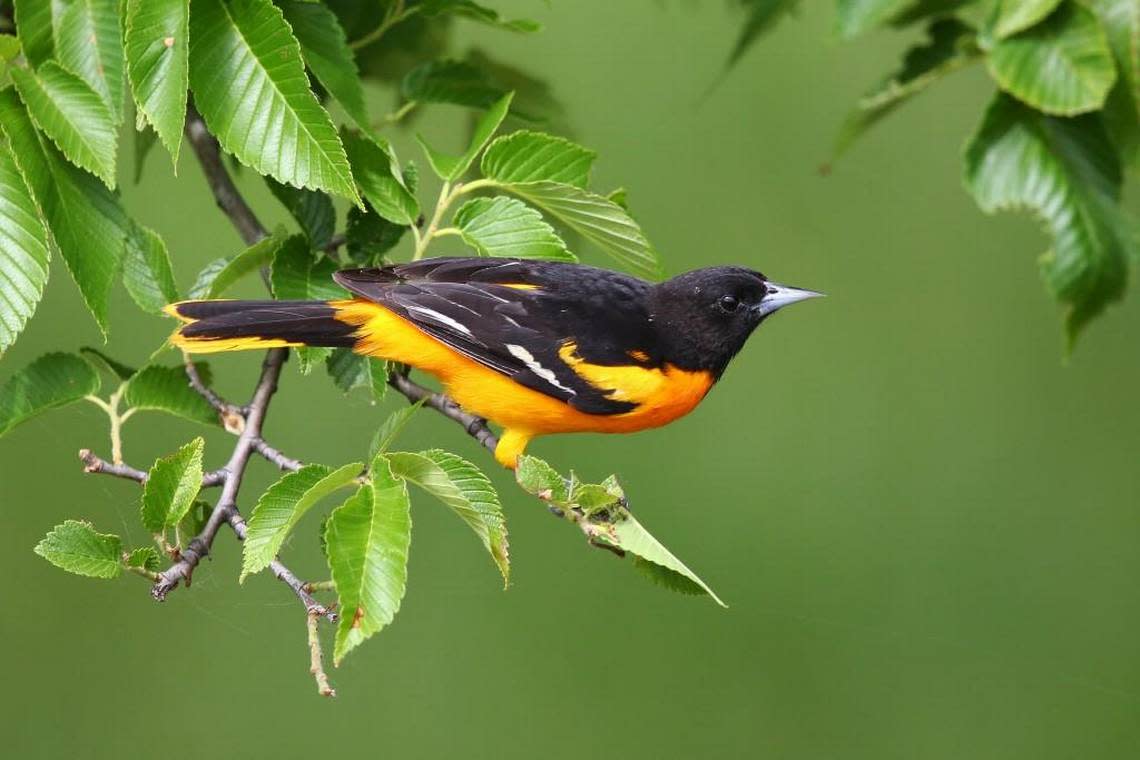
Rader said the popular summer resident the oriole will no longer be in Kansas after its typical migration to Florida, the Caribbean, Central America and northern South America for warmer weather. Baltimore orioles, common in the state during the summer, are known for their bright orange/yellow bellies and black heads.
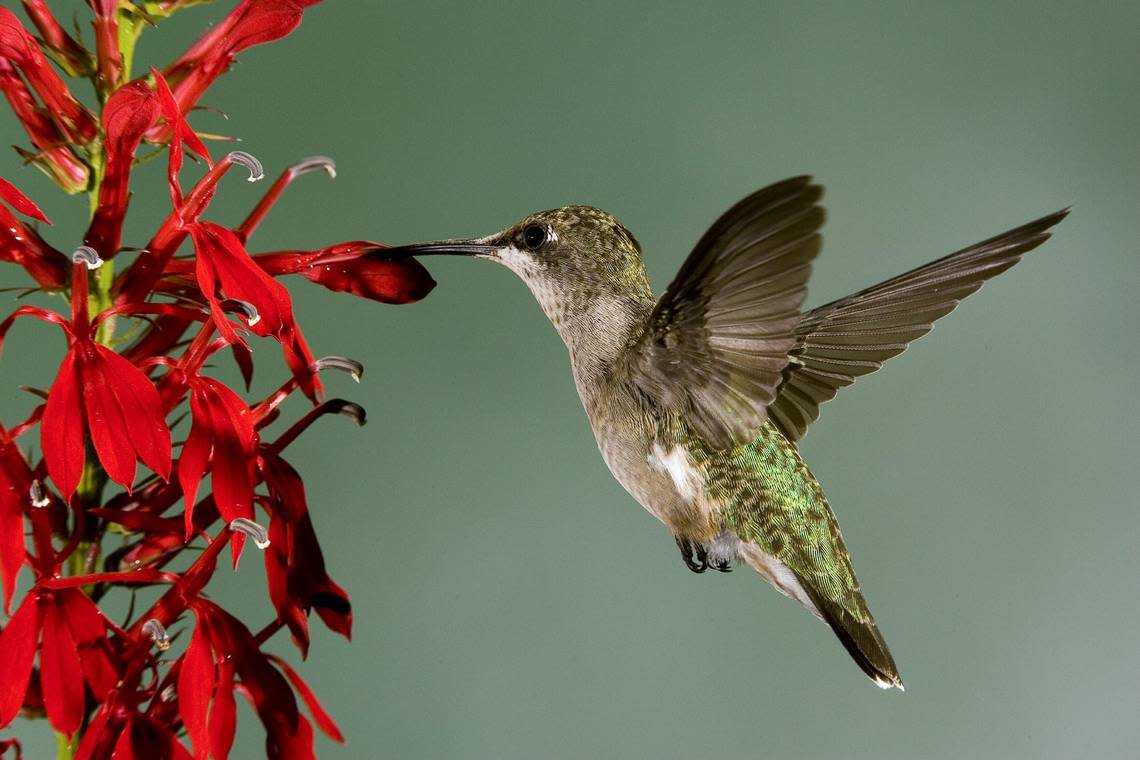
The popular ruby-throated hummingbird is also mostly gone by early October. These hummingbirds usually migrate to Kansas in mid-April and are gone by October, with the males typically leaving earlier, in mid-summer. These hummingbirds are small, measuring about 3.5 inches.
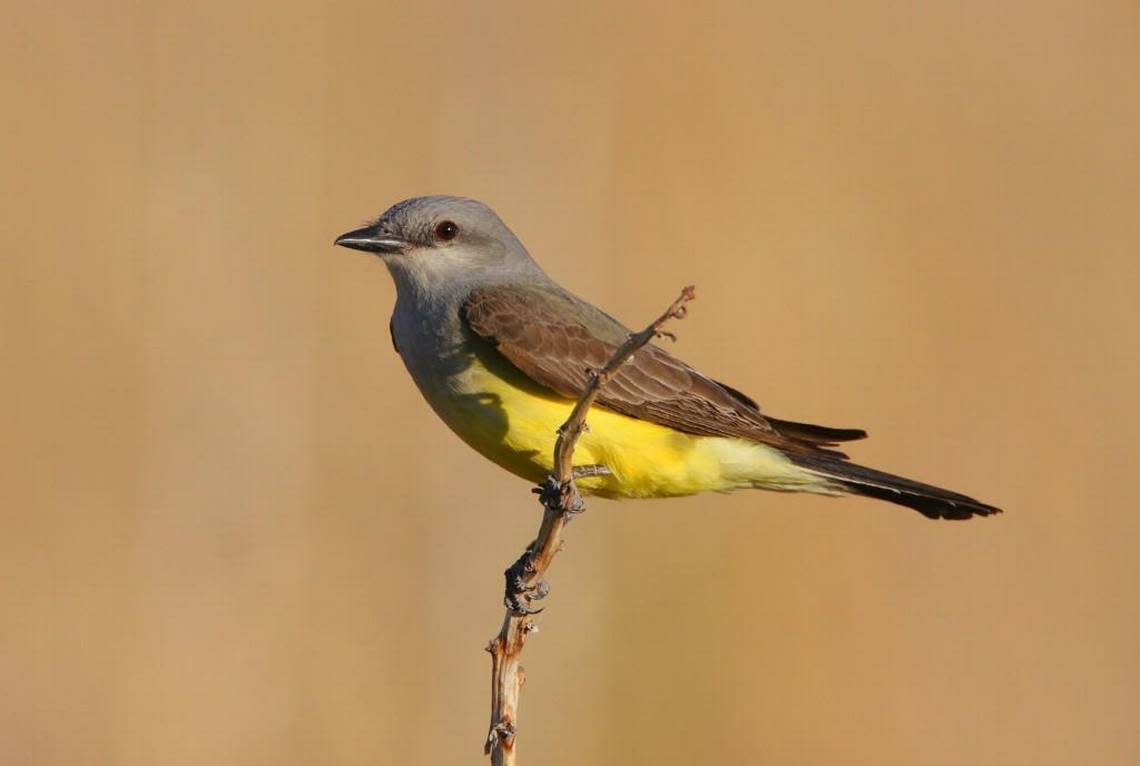
Western kingbirds have also left Kansas for the fall, but can be spotted in warmer months by their bright yellow bellies and mainly-gray bodies. All About Birds, a project of the Cornell Lab of Ornithology, says they’re commonly spotted perched on trees or fences in the summertime.
And for those wondering about an unusual sighting, the flamingo who found refuge at Chase State Fishing Lake earlier this month following Hurricane Idalia has already moved on, park officials confirmed Wednesday.
Birds to see in Kansas this fall
Not only will you see fall and winter resident birds show up this time of year, but other birds who are migrating north may make a stop in Kansas before reaching their destination, which makes it a prime time to bird-watch.
Rader said now is a good time to look out for sparrows, in particular.
“We’re seeing a lot of sparrows that are coming from the north that we don’t see in the summertime,” Rader said. “Some of the other sparrows that would have bred here, like grasshopper sparrows and Mark sparrows and chipping sparrows, ... they’re leaving now and they’re going further south, but then we see those other species that come from further north.”
Three types of sparrows to look out for are the Harris’s sparrow, the white-crowned sparrow and the dark-eyed junco.
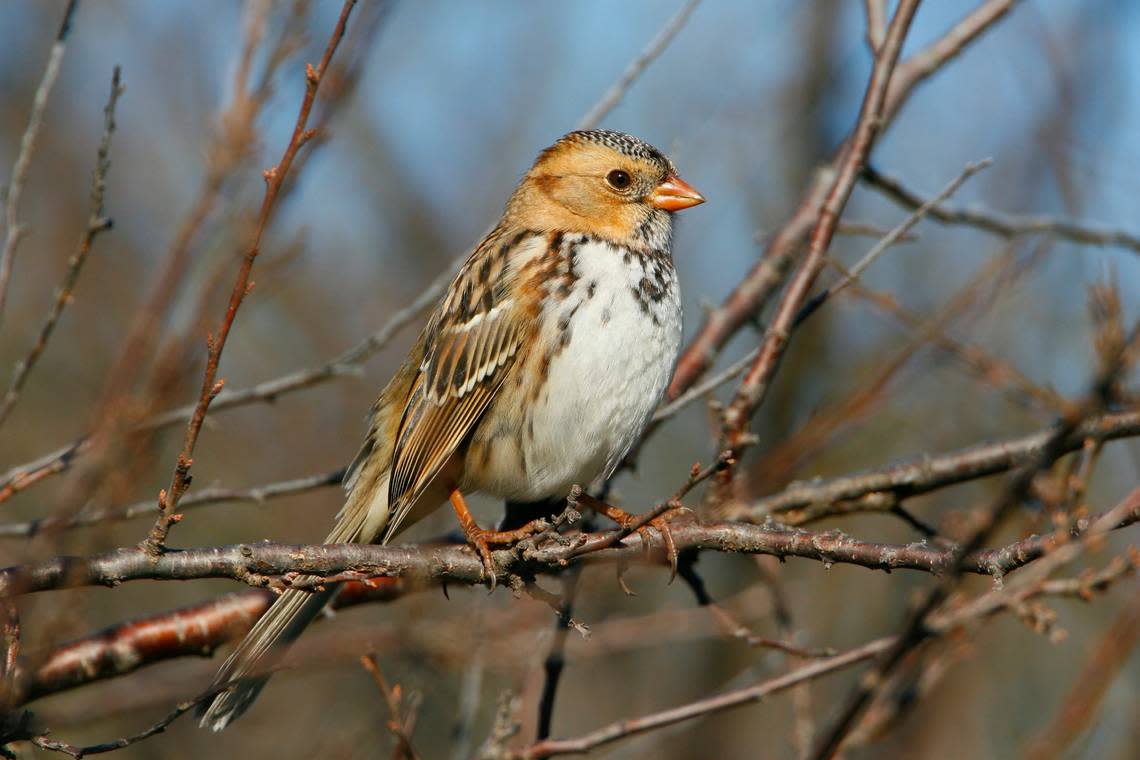
The Harris’s sparrow is large and chunky, with a streaky black and brown pattern on the body. In the wintertime they can usually be found in hedgerows, agricultural fields, backyards and shrubby areas, according to All About Birds.
White-crowned sparrows, on the other hand, can be identified by their gray breast, light beak and black-and-white head. They’re usually found in overgrown fields, but are also commonly seen at backyard feeders.
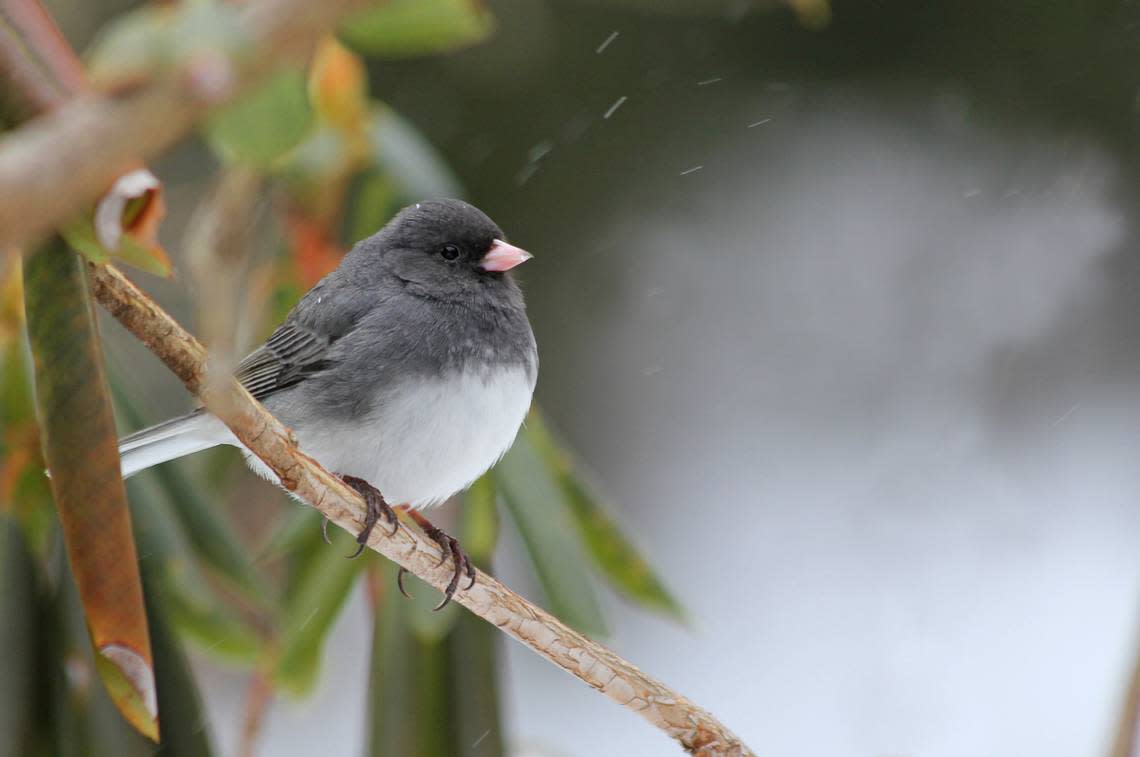
Dark-eyed juncos are medium-sized with gray and white coloring. You can spot them in fields, parks, open woodlands, backyards and roadsides during the winter.
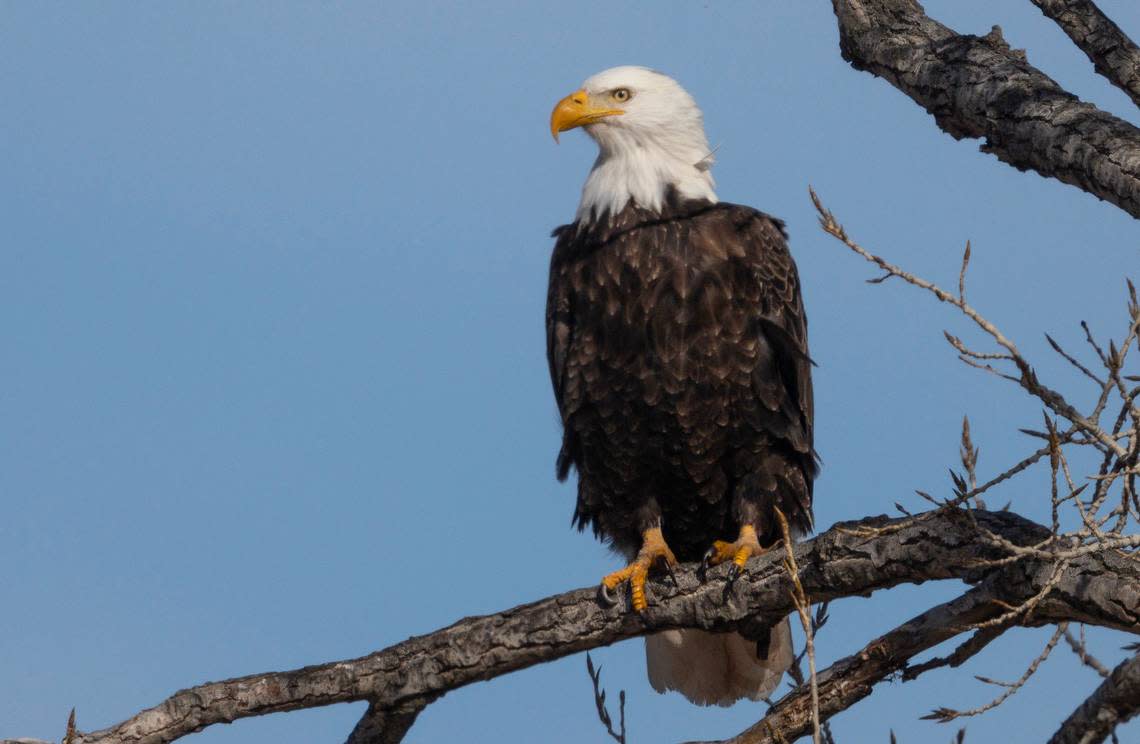
Bald eagles will soon also show up to the state to set up shop for the winter as well, Rader said.
“We’ll get an influx of bald eagles coming to reservoirs and places like that where they can spend the winter,” Rader said. “As long as there’s food to eat, which typically they follow waterfowl flocks and look for injured or sick waterfowl, or they’ll fish if waters open and that kind of thing.”
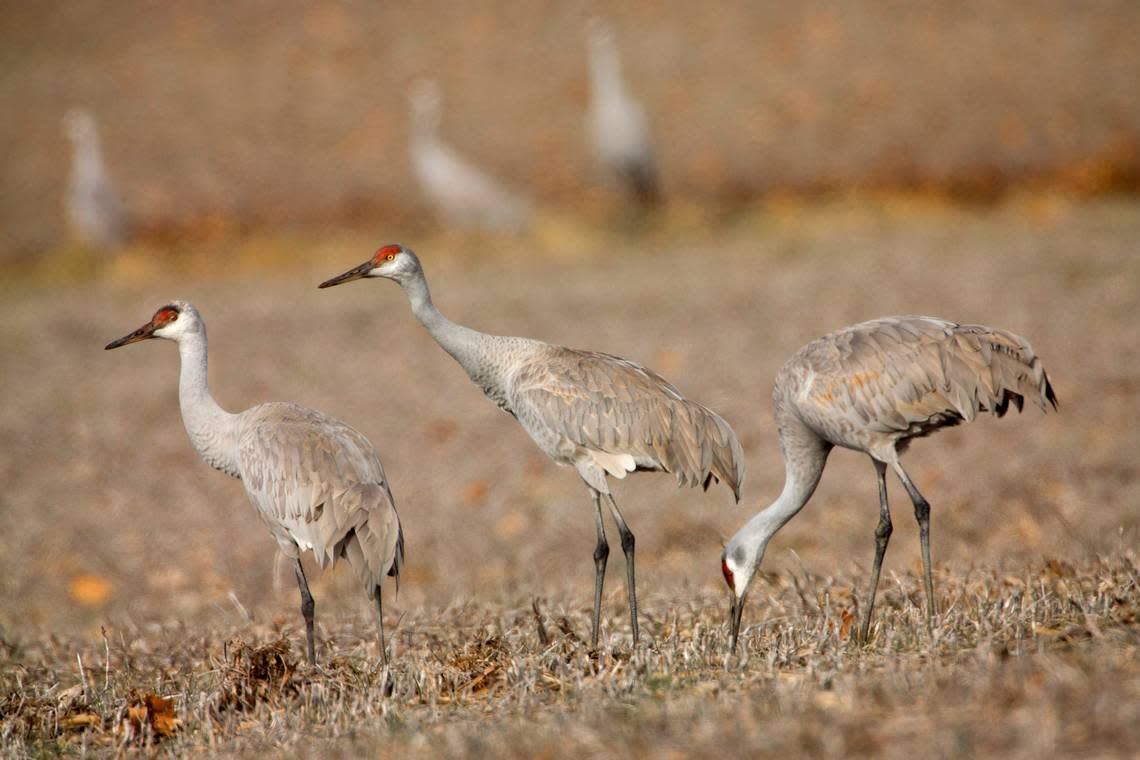
Kansas will also start to see some sandhill cranes start to appear soon, according to Rader. Sandhill cranes are tall birds with gray bodies and red-capped heads. They’re mainly spotted in open wetlands, prairies and fields.
Some other birds that’ll be easier to spot in your backyard this winter include several more sparrow species — like the spotted towhee — blue jays and red-breasted nuthatchs. There are also several species of hawks that will soon be spotted in the state, including a large influx of red-tailed hawks.
When is the best time of day for bird-watching during autumn?
The best way to get the most out of bird-watching right now is to spend as much time as you can outside, Rader advised.
“Especially on nice days ... since the mornings are cooler, it’ll be a little longer before they’re active. But if you can get there a little after sunrise and look around some, you’ll find the birds are active, they’re trying to go out and feed,” Rader said.
There are other birds that are active a little later after sunset, like woodpeckers and cardinals.
“A couple, three hours before sunset is another time you’ll be able to see quite a few birds,” Rader said.
If you’re planning on putting your bird feeder away for the winter, don’t. Instead, fill it with feed that can provide protein for birds that visit. One gardening blog, The Spruce, recommends filling it with things like sunflower seeds, nectar and nuts. For wintertime, the blog recommends peanuts.
